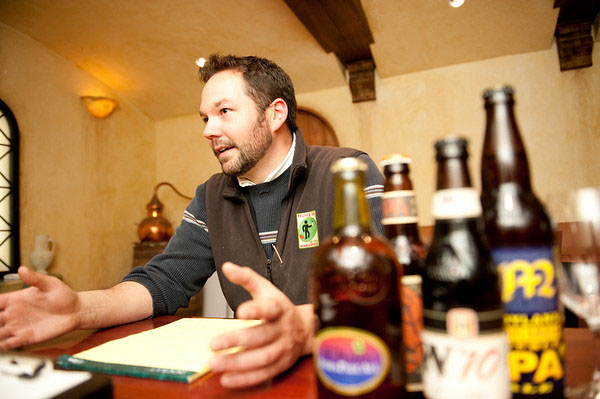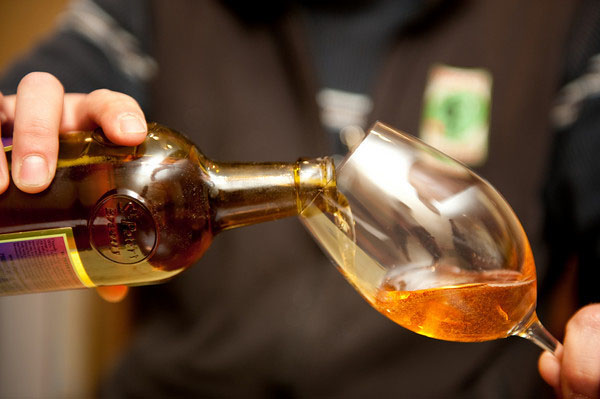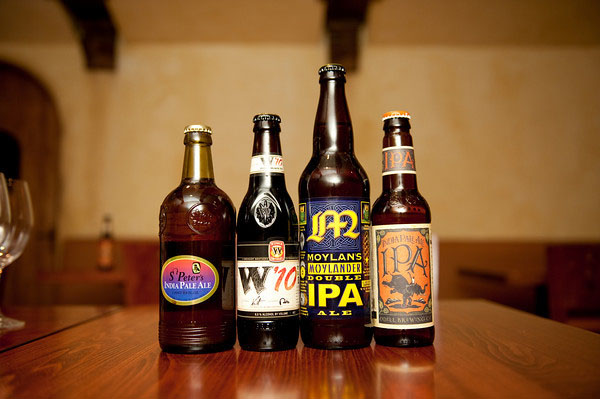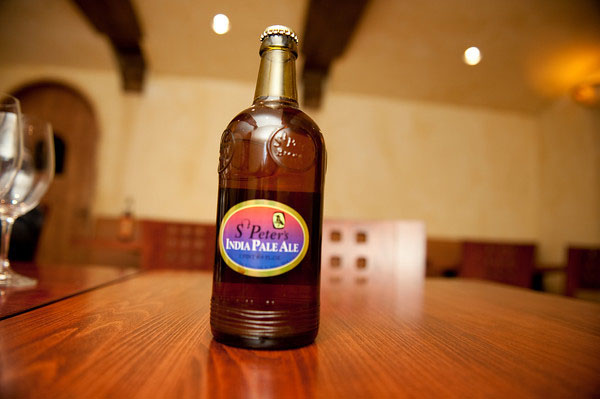
In recent years, India Pale Ale has taken the craft beer world by storm, becoming one of the most popular styles for homebrewers, microbrewers, and larger craft brewers alike. Snappily bitter with a malt backbone for balance, IPAs blend herbal, citric, and tea-like notes to make for a palate-slappingly engaging beer.
“It’s the most fun back story for any beer I’ve heard of,” says Matt Fisher, the beer buyer at France 44. Fisher pegs the creation of the IPA style to the expansion of the British Empire in the 18th Century. Sailors on ships traveling to far-flung colonies and trade destinations were finding that their beer wasn’t surviving the trip. “Their beer was just dying,” says Fisher. “All British sailors were allotted a gallon of beer a day, but when you’re ending up with sour beer, you’re left with testy sailors.”
New brewing techniques were attempted, with little success.
“They thought they could turn the mash into a concentrate and brew on the ship, but they got a really inconsistent product,” says Fisher. A 3-5 month journey to India was a daunting production hurdle. “They had to sail up and down both coasts of Africa,” he notes. “Even if you put the beer in the bottom of the hold where it’s coldest, it’s still going to get beat up and hot. It wasn’t working.”

A merchant named George Hodgson popularized the idea of throwing a stronger beer recipe at the problem. “He basically added 50 percent more of his mash to start in the boil, to raise the original gravity, and then after he sparged it, he added about double the amount of hops,” says Fisher. “The high gravity and more hops means that you’re reducing the chance of microbial activity and the resin in the hops prevents Lactobacillus [a common brewing infection].”
“In 1750, 1,450 barrels of IPA shipped. In 10 years, they had 9,000 barrels. It was a really popular beer.” A shipwreck in Ireland and a subsequent IPA auction boosted the style’s popularity among landlubbers, and the style boomed.
“This is my main reason I love IPAs — wherever it’s landed, it’s instantly popular,” says Fisher. “That very bitter grapefruit property, along with the floral tea-like quality makes it a fun, different beer. If all you’ve ever had is porters or stouts, having something really crisp and refreshing with a bite to it would be a whole new world.”

Based out of France 44’s tasting room, we sampled four different IPAs with Fisher to get a sense of the style’s range.
W’10 Pitch Black IPA | Widmer Brothers (Portland, OR)
“Black IPAs have made a resurgence in recent years,” says Fisher. “Like other IPAs, these beers use pale and crystal malts, but they utilize an additional method to turn the beer black. Some breweries are using de-bittered malts while others are using chocolate malts… everyone seems to have a different method. The beer pours dark — heavy mahogany color or straight black — but it’s got the floral bitter hop presence to it. The malt here is more in the forefront.”
For such a dark brew, the W’10 was deceptively light on the palate and easy to drink.
“As far as the black IPAs on the market, I like this one because it’s very sessionable,” says Fisher. “It’s a totally different beer than anything you’ve tried IPA-wise. You can tell from the pour how much darker this one is coming in. You’ll get hops, but you’ll also get very roasty malts.”
Reminiscent of an espresso stout, the beer had a roasty, smokey quality, and a surprisingly gentle finish. Black beer doesn’t normally register as summer drinking, but this stuff would do the trick.

St. Peter’s India Pale Ale | St. Peter’s (UK)
This British import was a bit reminiscent of iced tea in its light crispness and mellow overall profile.
“The St. Peter’s is so crisp in its hop flavors — it’s just a nice crisp sparkling refreshing pale ale,” says Fisher. “There’s no real malt quality. It’s very soft and easy drinking.”
Moylander Double IPA | Moylan’s (Novato, CA)
This double IPA has double the hops and an intriguingly funky odor.
“There’s massive hops to this,” notes Fisher. “That bittering content is going to come through a lot more — but it’s got a pretty malty backbone. It’s very dry, but you can see what I mean — they balanced it with some malt. It’s one of the better balanced double IPAs out there.”
India Pale Ale | Odell Brewing Co. (Fort Collins, CO)
Odell Brewing, newly arrived in Minnesota, offers a classic take on the IPA that goes beyond just grapefruit-centered attack of many American versions of the style.
“The grapefruit’s still there, but there’s a lot of other citrus notes to it,” says Fisher. “It’s also got very tea-like notes to it. Not a lot of roasted malt to this, but the malt works as a background to soften the hop flavors.”
“The more it warms up, it’s going to change quite a bit. When you’re drinking bitter beers, I like to drink them just below room temperature, because you’re going to get every quality in there.

IPAs are made year ’round, and some of the harder-hitting Imperial IPAs are best suited to late-winter drinking. But Fisher notes:
“IPAs do great as summer beers if you can find one that isn’t massive, that’s a little more sessionable. Even though it’s pouring black, it’s not heavy in the mouth and it’s very refreshing. I love pairing IPA with food — I love IPA with curry. You go over to Rice Paper and get the green curry chicken with Bell’s Two-Hearted and it’s just awesome.”
